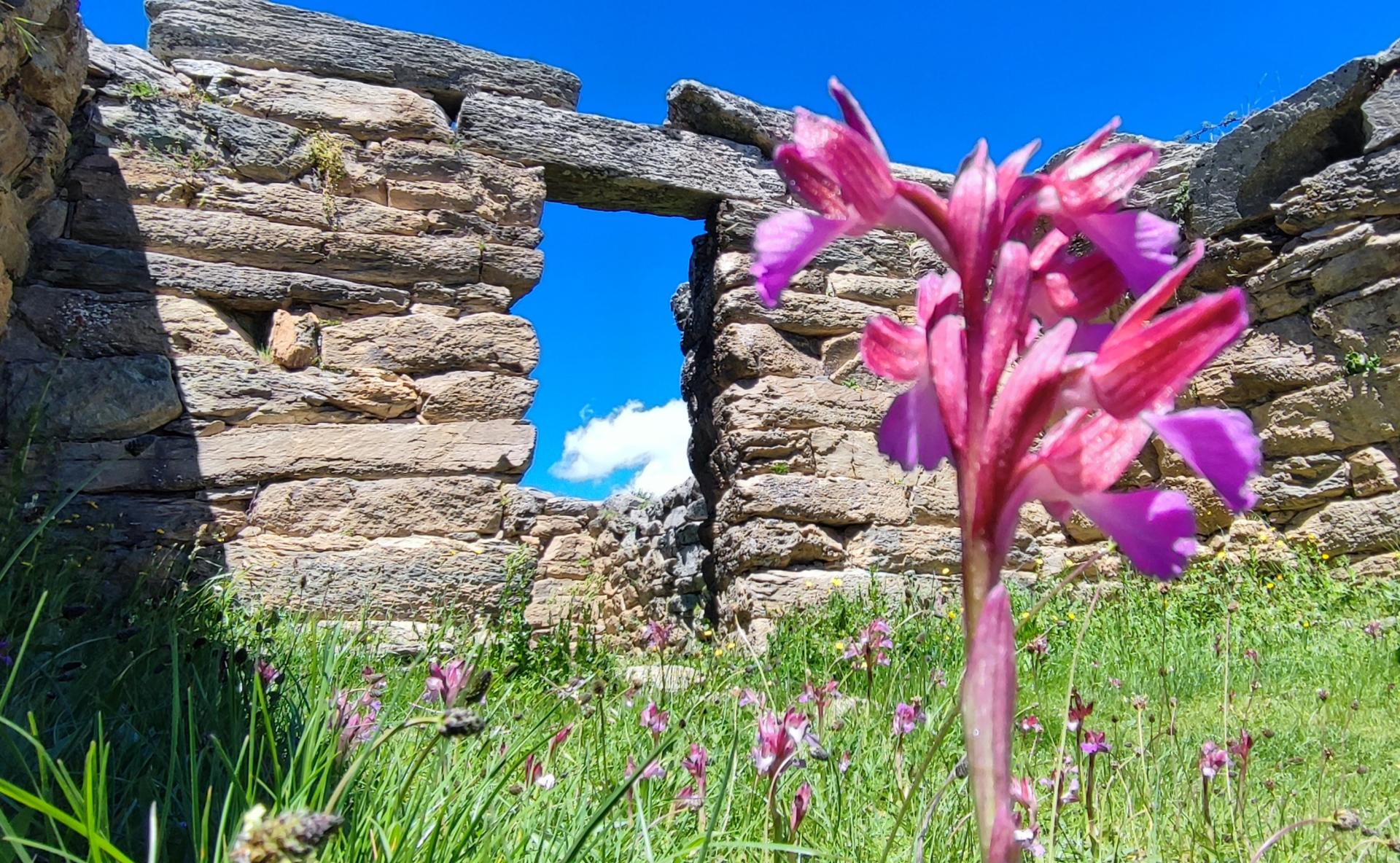The Domu 'e Urxia temple (or Domu de Orgia) is an important Nuragic archaeological site located in the territory of Esterzili. It is the arrival point of trail C 552 and the starting point of C 554.
The temple, situated at almost 1000 meters above sea level, is of the megaron type and is the largest of this typology among those present on the island. Enclosed within an elliptical sacred enclosure, the building is constructed with schist blocks. The temple has a rectangular plan of approximately 10x20 meters and consists of two chambers preceded by an in antis vestibule.
The excavations, which have brought to light several bronze statuettes, have allowed the complex to be dated to the second half of the 2nd millennium BC, with frequentations up to the Roman era.
Background informations
The Domu 'e Urxìa building is located at an altitude of 978 meters above sea level, near an old track for transhumant livestock, at the crossroads of the drove road towards the Cuccurueddi cliff, in an area of high pastures appreciated by shepherds and characterized by the intense scent of thyme (armidda). Not far from the construction, on the ridge and slopes of Monte Santa Vittoria, over an area of several hectares, there are also the ruins of a notable Nuragic village of circular-plan huts, enclosed within a space partly surrounded by cyclopean walls, a nuraghe, a curious megalithic enclosure, and a sacred well at the Monti 'e Nuxi spring, famous for its very fresh waters. The area was therefore inhabited by the Nuragic people since the most remote antiquity and already frequented between the second and first millennium BC. The rectangular temple has an elongated rectangular plan and is built with enormous blocks of greyish crystalline schist stone, called 'perda zippòrra' in the local dialect, perhaps because it is the same material once used for honorary and funerary cippi, as well as for the covering of small bridges and rustic dwellings.
Urxia was, according to some legends, the name of an evil fairy linked to a well-known Sardinian fairy tale (sa musca macedda).

